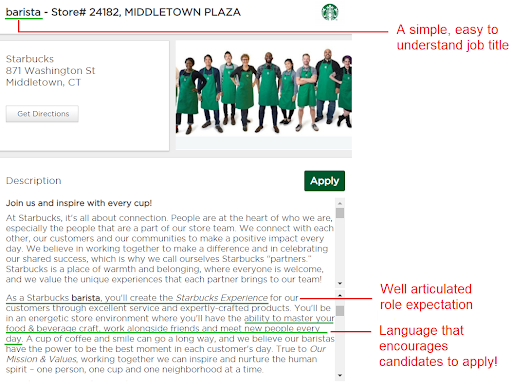As we reach the peak of summer, many businesses are already preparing for their busiest season. And this year promises to be particularly challenging, as organizations continue to grapple with a tight labor market. In order to build a large recruiting funnel to attract, hire, and retain seasonal employees, talent acquisition teams may have to get creative.
The seasonal hiring landscape has become increasingly competitive over the past two years. According to a recent report, 94% of state and local chambers said businesses were finding it difficult or very difficult to find workers. Thanks to the pandemic-fuelled shift in consumption patterns, a larger number of organizations are looking for temporary or part-time workers. In addition to logistics and brick-and-mortar retailers, the likes of Amazon, DoorDash, and Postmates are now competing for seasonal employees.
The candidate experience has also evolved significantly, with some employers even offering a job within 30 minutes of applying. For organizations embarking on their summer hiring binge, here are our top three strategies:
1. Optimize job advertising
In high-volume recruiting, candidate relevance is key. Employers often struggle with getting the right job in front of the best candidates. Getting this right is crucial to converting impressions into clicks and clicks into applications. Programmatic job advertising solutions help talent acquisition teams improve their recruiting funnel.
Next is understanding the efficiency of sources. Where are you getting your hires from? Visibility into down-the-funnel metrics helps talent acquisition leaders optimize spending by identifying the job boards, publishers, social platforms, and niche sites that offer the most value when considering candidate relevance and quality.
Getting this right: An AI-based programmatic solution can identify the most efficient sources and allocate spend to the best-fit publishers. For instance, when hiring seasonal retail workers, you’d be hard-pressed to find relevant candidates on LinkedIn, despite the platform being the most active professional community. An intelligent programmatic solution – trained by thousands of data sets from retail industry hiring – will serve ads on platforms that are likely to be frequented by prospective job seekers. It will allocate spend on sites like retail classifieds, WorkinRetail.com, or allretailjobs.com.
Bonus tip: To improve relevance and minimize drop-offs, use retargeting to engage with job seekers who have already interacted with your ad. This way, you can hone in on best-fit candidates backed with accurate information. Retarget candidates who did not (or could not) complete their application or high-intent candidates who searched for similar jobs. Retargeting is one of the most effective ways to bring down your cost per hire, by zeroing in on the most relevant candidates.
Source great-fit applicants that convert to successful hires quickly, with shrinking and uncertain budgets, and without compromising the candidate experience.
Experience the Power of Programmatic Job Advertising!
2. Craft the right job descriptions
With companies like Amazon advocating for a USD 15 minimum wage across the country, it’s going to be a lot harder recruiting employees with a potential USD 8 an hour. Lead with the benefits when writing your job descriptions – offering competitive wages? Mention the number. Will employees have the opportunity to pick up more shifts for better pay? Call it out in your job description.
One of the most overlooked aspects in job descriptions is the job title. Many large matrixed organizations use job titles defined by the corporate office. Across industries, it is best to think about what phrases a job seeker might type into a search bar when looking for a job instead of internal job names that may confuse candidates. For instance, you’re likely to get a lot more applications for a job titled “Retail Associate” or “Sales Associate” than something like “Store Concept Assistant” or “Sales Ninja.” You should also think about job site algorithms when choosing titles to ensure you aren’t overpaying for exposure to the right job seeker.

We recommend creating multiple job descriptions to target different people for the same job. This means including language tailored to each type of job seeker. Ideally, this promotes bias-free hiring, helping you cast a wider net and attract more diverse candidates.
Also, remember to articulate the job expectations very clearly. Avoiding a long list of requirements when hiring hourly workers is always best. Include only what is absolutely necessary to carry out the job. The idea is to bring as many people as possible into your hiring funnel.
Getting this right: Starbucks does a great job of showcasing their employee brand proposition while providing a clear and actionable brief for job seekers:
 Source: Starbucks Career Site
Source: Starbucks Career Site
The company clearly demonstrates the impact a barista’s expected to make. Notice how they include the tangible benefits before diving into qualifications? They also outline some of the intangible benefits, like learning on the job and meeting new people, at the start of the ad.
3. Measure what matters
Companies that have had the most success with binge recruitment for seasonal workers are the ones who track the cost per hire. And, if done right, programmatic can help organizations lower their cost per hire without compromising on candidate quality.
It’s crucial that you measure the metrics that impact your bottom line. Measuring attribution provides an understanding of just how effective your recruitment marketing strategy is when it comes to seasonal workers. The ability to compare metrics from a click, to an apply, to a hire in real-time and across sources helps identify factors that led candidates to you. Ultimately, this helps you optimize your ad spend and delivers hires instead of just applications.
Getting this right: Measuring vanity metrics (like number or applicants or cost per appy) can be misleading. They make your seasonal hiring strategy look good, but do not help you understand the recruiter or the TA team’s performance in a way that can inform future actions.
When deciding on the metrics to measure, it’s always great to ask if:
- (The metric) helps me make a business decision.
Example: Cost per application doesn’t provide a solid ground for calculating the cost-effectiveness of your programmatic campaign. It just tells you that you acquired X number of applications for Y cost. It doesn’t tell you how many of these applicants are likely to convert into hires, which is crucial information for business budgeting.
- it provides or establishes an accurate cause-and-effect relationship.
Example: Drop-off rates on your career site may help you establish a link between the complexity involved in applying for a job. By comparing data like click-through rates against drop-off-rates, you can paint a realistic picture of what’s right or wrong with your job post or description or the application process.
- the data reflects the truth.
Example: With some smart social media spending and promotions, you can make the data look more appealing – think higher engagement and clicks. You can buy clicks by the thousands for as little as $20 and manufacture virality for your job post in under two hours. But is that a real reflection of the truth? Data like this needs to be closely scrutinized if it is to inform your metrics.
Today, data and technology are inseparable from an effective high-volume recruiting strategy. Be sure to use an approach that enables you to hire high-quality seasonal workers at speed without compromising on the candidate experience.
Joveo helps employers implement strategies for seasonal hiring. With a source-agnostic approach, we ensure that employers get the most out of their advertising spend and create personalized candidate experiences at scale. And follow us on Twitter and LinkedIn, where we’re always working to help you get the most out of your recruitment advertising.















